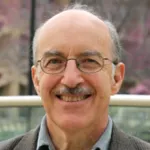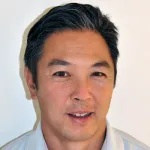
Stanford Medicine News Center - November 23rd, 2015
Nine Stanford faculty members — eight from the School of Medicine and one from the School of Humanities and Sciences — have been named fellows of the American Association for the Advancement of Science. AAAS members are elected as fellows by their peers for meritorious efforts to advance science or its applications.
Karlene Cimprich, PhD, professor of chemical and systems biology, was elected for contributions to the understanding of genome maintenance, particularly for elucidating molecular mechanisms of DNA damage signaling and cellular sources of genome instability. Her research has illuminated the role of RNA and certain enzymes called endonucleases in causing DNA damage.
Gerald Crabtree, MD, professor of pathology and of developmental biology, was elected for his work on the interaction between the signaling pathways and genetic circuits regulating embryonic development. Crabtree, who holds the David Korn, MD, Professorship in Pathology, studies the role of chromatin-regulatory complexes, protein complexes that work to keep DNA tightly condensed, in development and human cancer.
Stephen Galli, MD, professor of pathology and of microbiology and immunology, was elected for his work elucidating the role of basophils and mast cells in allergy, infectious disease and inflammation. Galli, the Mary Hewett Loveless, MD, Professor, investigates the roles of mast cells and basophils in conditions such as asthma and atopic dermatitis, as well as immunological mechanisms that underlie the development of severe allergies.
John Huguenard, PhD, professor of neurology and neurological sciences, was elected for contributions to the fields of basic and translational epilepsy research, particularly in the discovery and development of novel pharmacological and optogenetic therapeutic approaches. Huguenard studies and models circuits in the thalamocortical system of the brain, which is implicated in certain forms of epilepsy.
Steven Kahn, PhD, professor of physics, was elected for his contributions to X-ray astronomy through observations made with XMM-Newton’s Reflection Grating Spectrometer, and for ongoing lead- ership of the Large Synoptic Survey Telescope project. Historically, his efforts have been concentrated in X-ray spectroscopy of astrophysical sources, but more recently Kahn, who is the Cassius Lamb Kirk Professor in Natural Sciences, has focused on experimental cosmology.
Calvin Kuo, MD, PhD, professor of hematology, was elected for contributions to the fields of angiogenesis, stem cell biology and cancer modeling, particularly for the discovery of novel molecular mediators and organoid methods. Kuo, the Maureen Lyles D’Ambroglio Professor, develops methods to grow tissues and tumor samples to create therapies for cancer patients and discover cancer-related genes.
Beverly Mitchell, MD, professor of oncology and of hematology, was elected for contributions to the field of hematology and oncology, particularly for studies on the roles of purine metabolism and factors regulating ribosomal RNA synthesis in promoting cancer growth. Mitchell, who is the George E. Becker Professor in Medicine, develops new therapies for hematologic malignancies and directs the Stanford Cancer Institute.
Hugh O’Brodovich, MD, professor and chair of pediatrics, was elected for his work in pulmonary and critical care medicine, particularly for studies of the physiology and pathogenesis of respiratory distress syndrome and bronchopulmonary dysplasia. O’Brodovich, who holds the Arline and Pete Harman Professorship for the Chair of the Department of Pediatrics, investigates why some newborns get lung disease and others don’t.
Thomas Rando, MD, PhD, professor of neurology and neurological sciences, was elected for contributions to the field of stem cell biology, particularly for pioneering work using heterochronic parabiosis to study stem cell aging. Rando studies the signaling pathways involved in stem cell quiescence, proliferation, self-renewal and aging, as well as the cells’ role in muscular dystrophy.






